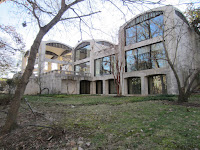 |
| IU SRSC Pool |
When I saw that adult swimming lessons, for all skill (or non-skill) levels, were being offered at the IU gym, I leaped at the opportunity to learn. On my first day of class, I observed that all the participants in the Adult Level I group were from the Near or Far East - most were IU undergraduate students from China or Korea, plus a guy from the Middle East, and two older Asian women, including me. In contrast, the little kids in the Child group were mostly whites, with a couple of Asians, and no blacks. I couldn't help wondering about the race distribution in both cases. I would have thought that swimming is no longer so much a luxury sport nowadays in most parts of the world, especially in countries like South Korea or China. And why the African Americans should not take to swimming, as opposed to basketball, football or track, I can not quite fathom. Anyways, I personally have a strong incentive to master the basics of swimming this spring -- we will be in Australia for two weeks in early May and we plan to make a detour to Cairns and Port Douglas area for snorkeling trips to the Great Barrier Reef!









